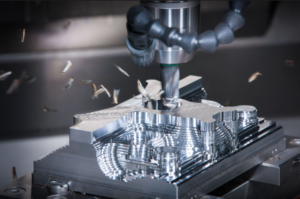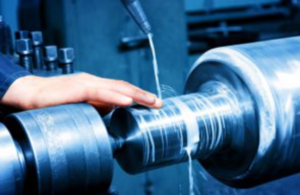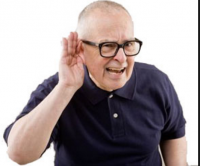August 6, 2017
August 6, 2017

Working in the pulp and paper industry, workers are frequently reminded to wear hearing protection and safety glasses. Most manufacturing areas mandate their use, and failure to comply with these rules frequently brings stern warnings or reprimands. Fortunately, the use of Personal Protective Equipment (PPE) for sight and sound has almost become second nature to most Paper and Pulp plants. However, there are still some plants that have not found a way to enhance a safe workplace by implementing a hearing conservation program. Specializing in personalized hearing protective, ProtectEar USA has helped many manufacturing companies overcome their performance limitations and safety concerns. We start by assessing the noise levels and working conditions each person faces. then we determine the best protectors for the individual and make appropriate recommendations for optimal productivity, protection, and comfort.
Do not wait to experience any of these symptoms before you protect your ears with hearing protection. ProtectEar dB Blockers™ custom fit earplugs are more comfortable and offer superior hearing protection to any disposable earplug. However, did you know that they are more cost effective as well?
You can reduce your hearing protection costs by 60% over five years when an entire facility is fit. dB Blockers™ are more comfortable because there is only one way for them to fit and they made for each individual. They also make it easy for workers to communicate with each other because of our proprietary tuned filter that allows users to hear better with the plugs in than if they take them out.
As a Hearing Protection Manufacturer, it is great to see specific sectors like Pulp & Paper Canada take a stock in Noise Induced Hearing Loss.

The most obvious impact is noise-induced hearing loss but stress, hypertension, poor sleep and mental health, and physical injury due to communications challenges can all be linked to noise exposure.One in five adults aged 19 to 79 already have mild hearing loss or more in at least one ear. Chances are, with time and continued exposure their hearing will worsen. Statistics like these have prompted the Ontario Ministry of Labour to launch an occupational noise initiative. From April 1, 2017 to March 31, 2018 inspectors will be looking at how — and how well — employers are protecting workers from noise.
A noise regulation (381/15) passed in July 2016 says employers must follow a “hierarchy of controls” to protect workers. Under this hierarchy, engineering controls and work practices come before personal protective equipment (PPE), such as earplugs and ear muffs. Engineering solutions are the better option because they control noise everywhere eliminating the reliance on workers to wear protection.

4. Ensure your controls are working. Implement a surveillance program that includes audiometric testing to make sure people are using hearing protection correctly and not suffering hearing loss.
Noise is one of the most common occupational health issues in metal manufacturing/casting facilities. As a manufacturer in North America, staying competitive and profitable at the same time can be very challenging. While you must adhere to regulations designed to keep your workforce safe, some of your foreign competitors don’t, which unfortunately squeezes your margins. So, to keep your factory open and profitable, you need to concentrate on improving productivity.
Custom Protect Ear (CPE) specializes in personalized hearing protection and has helped a number of metal machining and fabricating operations overcome their productivity limitations and hearing health safety concerns.

According to OSHA, the definition of Noise is unwanted sound. Sound is measured in two ways: by frequency and loudness (intensity). Loudness refers to the sound’s intensity and is measured in decibels (dB) on a logarithmic scale. Excessive exposure to noise can produce both temporary and permanent hearing loss.
Permanent hearing loss generally occurs gradually over time. By the time a worker notices a hearing problem, it is usually too late to do anything about the hearing loss. The extent of the hearing loss depends on the noise frequency, intensity and exposure time. High noise levels have other undesirable effects, such as interfering with communication in the workplace. For your workers to stay on top of their game, they need to be able to communicate interpersonally or by radio while remaining protected. Worker safety should be a top priority for everyone, whether they’re monitoring controls, part of the production process or working with machinery.
Machinist and maintenance people need to hear how their machinery sounds to ensure that it is running properly, so they don’t often wear their earplugs correctly. Without the proper ear protection, workers are exposed to hearing damage which ultimately may hinder their ability to detect a machine’s problems before it breaks down, resulting in costly consequences. dB Blockers™ provide workers with effective protection and a safe, audible sound range needed to efficiently perform their job.
Often when dirty hands come into contact with ears to adjust hearing protectors, workers develop ear infections. 
dB Blockers™ fit perfectly upon insertion – no need to re-adjust. Various models of dB Blockers™ are available, highlighted by one style that comes with a convenient handle (The Grip) for clean, easy insertion and removal. dB Blockers™ fit better than muffs for those with glasses or facial hair.
For welders, disposable earplugs are not only inadequate but are also dangerous as they melt, and even burn when hot slag hits them.
Fortunately, dB Blockers™ don’t burn or cause machinery breakdowns by clogging critical systems such as foam disposables earplugs do when carelessly discarded. dB Blockers™ are not disposable so they won’t end up littering the parking lot.
With workers’ hearing properly protected while wearing dB Blockers™, you can overcome some of the worksite challenges you may be experiencing. This will help your operation toward staying competitive and profitable in the market place.

Sources:
Noise is one of the most common occupational health issues in metal manufacturing/casting facilities. As a manufacturer in North America, staying competitive and profitable at the same time can be very challenging. While you must adhere to regulations designed to keep your workforce safe, some of your foreign competitors don’t, which unfortunately squeezes your margins. So, to keep your factory open and profitable, you need to concentrate on improving productivity.
Custom Protect Ear (CPE) specializes in personalized hearing protection and has helped a number of metal machining and fabricating operations overcome their productivity limitations and hearing health safety concerns.

According to OSHA the definition of Noise is unwanted sound. Sound is measured in two ways: by frequency and loudness (intensity). Loudness refers to the sound’s intensity and is measured in decibels (dB) on a logarithmic scale. Excessive exposure to noise can produce both temporary and permanent hearing loss.
Permanent hearing loss generally occurs gradually over time. By the time a worker notices a hearing problem, it is usually too late to do anything about the hearing loss. The extent of the hearing loss depends on the noise frequency, intensity and exposure time. High noise levels have other undesirable effects, such as interfering with communication in the workplace. For your workers to stay on top of their game, they need to be able to communicate interpersonally or by radio while remaining protected. Worker safety should be a top priority for everyone, whether they’re monitoring controls, part of the production process or working with machinery.
Machinist and maintenance people need to hear how their machinery sounds to ensure that it is running properly, so they don’t often wear their earplugs correctly. Without the proper ear protection, workers are exposed to hearing damage which ultimately may hinder their ability to detect a machine’s problems before it breaks down, resulting in costly consequences. dB Blockers™ provide workers with effective protection and a safe, audible sound range needed to efficiently perform their job.
Often when dirty hands come into contact with ears to adjust hearing protectors, workers develop ear infections. 
dB Blockers™ fit perfectly upon insertion – no need to re-adjust. Various models of dB Blockers™ are available, highlighted by one style that comes with a convenient handle (The Grip) for clean, easy insertion and removal. dB Blockers™ fit better than muffs for those with glasses or facial hair.
For welders, disposable earplugs are not only inadequate but are also dangerous as they melt, and even burn when hot slag hits them.
Fortunately, dB blockers™ don’t burn or cause machinery breakdowns by clogging critical systems such as foam disposables earplugs do when carelessly discarded. dB Blockers™ are not disposable so they won’t end up littering the parking lot.
With workers’ hearing properly protected while wearing dB Blockers™, you can overcome some of the worksite  challenges you may be experiencing. This will help your operation toward staying competitive and profitable in the market place.
challenges you may be experiencing. This will help your operation toward staying competitive and profitable in the market place.

Sources:
The SLM is not worn by the worker, but is held by someone else taking measurements while following the worker. A dosimeter stores sound level measurements and integrates them over a work shift. The worker wears the dosimeter for the entire sampling time. The read-out is in percent dose or equivalent time weighted-average (TWA) exposure. All noise monitoring instruments should meet applicable American National Standards Institute (ANSI) standards (ANSI S1.40, and ANSI S1.25) and be used according to the manufacturer’s instructions. Meeting these specifications assures the accuracy of the results. Impulse or impact noise is automatically included in the dosimeter measurements by the ANSI standards. A sudden, sharp, isolated sound, such as hitting the side of a sand bin with a sledge hammer, is an example of impact noise.

As a Hearing Protection Manufacturer, we as a company are always speaking about Hearing Loss Prevention in the workplace. However, there are also Best Practices for developing a culture of hearing conservation, both at work and at home.
Since OSHA had implemented detailed noise exposure regulations (29 CFR 1910.95), employers and safety professionals have monitored noise levels, posted warning signs, purchased earplugs and routinely tested employees’ hearing. Other activities consisted of training programs for new employees, putting up posters and selected groups to be a part of the product buying process.
Although these activities are conducted to prevent hearing loss, workers are still continuing to suffer noise-induced hearing loss at alarming rates. The cost of noise-induced hearing loss in the United States is now measured in billions (not millions) of dollars annually.
Setting up the actual Hearing Loss Prevention plan is easy; the difficult task is getting workers to buy in and engage in the program. In addition, loud noises are not just limited to the workplace. Noise-induced hearing loss can be just as prevalent off the job as on the job, and exposure outside the workplace is often a lot less noticeable.
Beyond employee adherence to safety rules, there are ways to utilize other controls for reducing noise exposure that will impact the worker on and off the job.
Additionally, OSHA offers a list of administrative controls that managers can use to minimize the risk:
Some of these suggestions may be more feasible at your work site than others, so take advantage of those that you can logistically implement. Encourage employee participation in this process as well, because they tend to have the greatest exposure to noise, and thus may have insights for improving hearing protection. Many incidents of hearing loss from occupational noise exposure are preventable, and because completely eliminating the noise at work is often not an option, companies must take every measure possible to minimize its effects.
To learn how a Proper Safety plan is executed please check out our previous post: A Proper Executed Safety Program
Sources
http://www.selectinternational
Workplace injuries can cost our society around $128B in losses in a given year. This amount equals to 25¢ of every dollar in pre-taxed corporate profits.
(American Society of Safety Engineers. 2002)

Establishing a proper Workplace Safety Program will not only provide proper structure for safety but will also create long-term savings in an organization. Having a proper outlined safety guideline can provide essential benefits such as:
“50 workers are injured every minute of the work week.”
– American Society of Safety Engineers, 2002
A health and safety manager is responsible for ensuring that safety is an essential component of an organization. (Maine Department of Labor, 2013) Reducing injury in the workplace is imperative, as the people within the company are the vital elements that help steer the organization’s future.
Therefore, it is important to have a safety system with proper precautions. Without a system, avoidable injuries and costs can arise. Examples of the costs that could be affected are:
The money that is spent on these avoidable costs could be invested into other aspects of the organization: i.e. – enhancing the development of both the business and the people of the company. An example of where to invest would be: providing cost-effective personal protective equipment to prevent worker injuries. Personal protective equipment could include proper custom ear molding devices to protect hearing-loss, eyewear to prevent eye injury, headwear to protect your head, etc.
A lack of safety can lead to a loss of productivity, efficiency and time, in the long-run.
“Developing a safety culture… increases employee productivity by 24% and reduces factory costs by 20%
– SafetyLine, 2017

When an organization tries to find methods to cut costs (including bypassing a properly outlined and managed safety program), the assumption is that this will save money and time; thereby increasing profits. This type of action creates the opposite effect in the long run, as these workplace environments can be deemed unsafe and undesirable to work in. A decrease in productivity may occur as a consequence of injured employees taking time off from work. This can be a detriment to any company and needs to be avoided.
That is just one aspect of a loss in productivity when avoiding an investment in a safety. Other affected benefits may include:
When a working environment is at its peak morale, employees are motivated to work hard and be safe in their roles. This provides the company with an opportunity to invest into other aspects of their business when people are productive and safe.
“Building a strong health and safety culture will have positive impact on your workers and public perception”
– Worksafe BC, 2017
Company culture creates an “aura” that is interpreted by society. When a company values safety as an organizational standard, potential and current talent sees this as a positive benefit to working for a company. When a company undervalues safety and health, it can create a poor reputation, pushing away workers. Employee morale can be affected, resulting in people leaving the organization. When a company is unable to fill positions, wages that are above market values are typically needed to attract talent. (American Society of Safety Engineers. 2002)
Engaging the workforce in health and safety practices; having a transparent and open health and safety program, and always wanting to improve the health and safety performance inside a company, provides a great return for any organization. Creating a strong health and safety culture demonstrates that employees are highly valued.
“Studies indicate that every $1 invested in a workplace safety program [returns] $3 – $10 in direct and indirect cost savings.”
– American Society of Safety Engineers, 2002
More than $40 billion are paid each year by employers and their insurers in worker’s compensation benefits; or nearly $500 per covered employee. (American Society of Safety Engineers. 2002) There is an initial investment when creating a safety program, but it will pay off in the long run. A company may experience high monetary losses and workforce labor losses without proper guidelines. Safety is a major factor that should never be overlooked or ignored. Recognizing the value of a comprehensive health and safety program will ultimately save the organization money.
Sources
American Society of Safety Engineers. (2002, June 8). White Paper Addressing the Return on Investment for Safety, Health, and Environment (SH&E) Management Programs [Article]. Retrieved June 14, 2017, from http://www.asse.org/professionalaffairs/action/return-on-investment-for-safety/
Institute for Safety and Health Management (2014, September 4). Why Safety and Health Have Good Business Benefits [Blog]. Retrieved from https://ishm.org/safety-health-good-business-benefits/
Maine Department of Labor (2013). Managing Safety and Health [Article]. Retrieved from http://www.safetyworksmaine.gov/safe_workplace/safety_management/
SafetyLine (2017). Is Safety Productive? [Blog]. Retrieved from https://safetylineloneworker.com/blog/is-safety-productive/#more-2740
Worksafe BC (2017). Enhancing Health & Safety Culture & Performance [Article]. Retrieved from https://www.worksafebc.com/en/health-safety/create-manage/enhancing-culture-performance
Sound energy travels in waves and is measured in frequency and amplitude.
Amplitude measures how forceful the wave is. It is measured on a Logarithmic scale and reported[1] in decibels or dBA of sound pressure. 0 dBA is the softest level that a person can hear. Normal speaking voices are around 65 dBA. A rock concert can reach about 120 dBA but is often at 100 dB.
Sounds that are 82[2] dBA or above can permanently damage your ears when exposed for a long period of time. The more sound pressure a sound has, the less time it takes to cause damage. For example, a sound at 85 dBA may take as long at 8 hours to cause permanent damage, while a sound at 97 dBA can start damaging hair cells after only 30 minutes of listening.
Frequency is measured in the number of sound vibrations in one second. A healthy ear can hear sounds of very low frequency, 20 Hertz (or 20 cycles per second), to a very high frequency of 20,000 Hertz. The lowest A key on the piano is 27 Hertz. The middle C key on a piano creates a 262 Hertz tone. The highest key on the piano is 4186 Hertz.
Walked past a jackhammer in the street and winced because the sound was so loud? Being exposed to loud noises for a brief period usually does no harm, but imagine having to suffer it hour upon hour, day after day. Noise that can damage your ears is referred to as “Toxic Noise”. A reliable way to determine if you have Toxic Noise is to stand 1 meter or 1 yard from someone. If they can’t understand you when speaking at a normal conversational level, you have an indicator that you have Toxic Noise. Once you determine you have Toxic Noise, the first thing you need to do is measure how loud it is so you can take effective steps to reduce it.
Making precise measurements of noise used to be quite a tricky business, but now there are automated, electronic sound-level meters that do the job for you.
How loud a sound seems to depend on who’s listening. A young person playing rock up in their bedroom might not think their music is loud, but their parents in the room down below might have other ideas. In other words, how loud things seem is a subjective thing and not something we can easily measure. However, what makes one sound seem louder than another is the amount of energy that the source of the sound is pumping towards the listener in the form of pressure variations in the air. That’s the intensity of the sound.
Meters that measure sound levels work by calculating the pressure of the sound waves traveling through the air from a source of the noise. That’s why you’ll sometimes see them referred to as sound pressure level (SPL) meters. Devices like this give a measurement of sound intensity in units called decibels as we mentioned before. Telephone pioneer Alexander Graham Bell first devised this scale.
Below check out the sound odometer and the intensity of various sounds.

If you think you have toxic noise, and you want help measuring it, contact (in the U.S. hearus@protectear.com and in Canada contact hear@protectear.com ).
Sources
http://www.explainthatstuff.com/sound.html
[1] Because the scale is Logarithmic the difference between 10 decibels and 11 decibels is 10x the sound power just like the Richter scale for measuring the intensity of earthquakes.
[2] A European study showed exposures of up to 82 dB resulted in the same hearing loss as the general non-noise-exposed population. At 85 dB the noise-exposed population experiences twice the regular population’s level of hearing loss.
Now that summer is just around the corner, it is important to know that there is more than just the sun to protect oneself from. Summer is filled with several outings and adventures where you may be exposed to loud noises. We don’t often think about the impact some activities can have on our hearing, so here are few to look out for this summer.
Many of us are eager to hit the road during warmer months. During road trips, keep the stereo at a moderate volume, and don’t use music to drown out background noise. Opt for noise canceling earphones, instead.
If you are a rider and say “motorcycle noise”, most people think of loud exhaust pipes. Savvy riders know there’s a much greater enemy — wind. Exposure to sound louder than 95 decibels (dB) can cause permanent hearing damage. Street riders on quiet bikes can expect wind noise to exceed 110 dB (even inside a good helmet); racers can expect 115 dB. Fifteen minutes of 110 dB a day, five days a week (can you say commute?) can cause up to a 30-percent hearing loss within a year. Your options: never ride faster than you can walk, use motorcycle personal ear plugs, or face a future with one of those ear trumpets glued to the side of your head.

Be smart when you celebrate July 1st or the 4th of July festivities. Leave the fireworks to the professionals. And when watching the show, stay a safe distance away—where you can enjoy the colors and lights but not expose yourself and your family to loud noises.
To protect your hearing, make sure you’re wearing earplugs and that they’re securely in place before the show begins. Also be sure to keep them in for the entire show.
Most of all, you should limit the length of time you spend in a noisy environment. When you do participate in noisy activities, alternate them with periods of quiet. And remember to use ear protection.
 Remember to “TURN it DOWN”
Remember to “TURN it DOWN”When listening to smartphones and other electronics, use them at a low volume. It is important to limit your use of headphones and ear buds. Remember, it’s not just the volume that matters. It is also the exposure or duration of time spent listening.
Air travelers often complain about ear discomfort. When the plane is taking off or landing, yawn, swallow or chew gum to unplug your ears. If these tips aren’t effective, pinch your nostrils shut, inhale a mouthful of air, and direct the air back to your nose, as if you’re trying to gently blow, to equalize the pressure in your ears. Vented customized hearing protection devices can also help with the ear discomfort when the plane gets noisy.


Approximately 46 million Americans experience some form of communication disorder. Communication disorders can compromise physical and emotional health and affect the social, educational, vocational, and recreational aspects of life.

To raise awareness about communication disorders, the National Institute on Deafness and Other Communication Disorders (NIDCD) joins the American Speech-Language-Hearing Association (ASHA) in observing Better Hearing and Speech Month each May. The NIDCD, ASHA, and many allied organizations educate the public about communication disorders, treatments, and current research that can improve the lives of those with hearing loss or with voice, speech, or language disorders. This year’s Better Hearing and Speech Month theme is “Communication: The Key to Connection.”
“Approximately 15 percent of American adults, or 37.5 million people, report some degree of hearing loss. Hearing loss can lead to feelings of isolation and a lack of connection with family, friends, and community. Assistive devices such as hearing aids can significantly improve quality of life, yet only about one in four of those who could benefit from hearing aids has ever used them.”
SOURCE
https://www.nidcd.nih.gov/news/2017/may-better-hearing-and-speech-month

It is not disputed that earplugs protect the wearer from the noise exposure in an industrial, musical, sports and motorsport setting. The single-use disposable earplug remains the most common type of hearing protection in use today. In fact, disposable hearing protection is still commonly used in workplaces despite them being commercially introduced as the first foam disposable earplugs over 40 years ago.
Single-use disposable ear plugs remain popular because they’re perceived to be inexpensive -although they are not. Disposables are not cheap when compared to use over the expected lifetime of a custom moulded earplug.
Allowing for 2 breaks and lunch, the user of disposable earplugs will use 4 pair per day. (Disposable hearing protection should never be reinserted once removed). When allowing for bulk buying, generally earplugs can be purchased for about 15¢ per pair.
REAL COST BREAKDOWN
Use of 4 pair of earplugs per day for 5 days per week for 50 weeks per year brings the cost to $150.00 per employee. A pair of custom-moulded earplugs costing $150 with an expected use life of five years, amortizes to $35.00 per year
Ear Plugs contribute to waste production and landfill
Along with the REAL COST, the other unfortunate and negative aspects of single-use earplugs are – they contribute to waste production and landfill.
It is no secret that there is a shortage of landfills across North America; plus many companies including Custom Protect Ear (CPE), are trying to reduce their carbon footprint by adopting sustainable practices and producing ecofriendly products to eliminate waste. Our company, CPE, is committed to becoming more sustainable by working to eliminate or offset any adverse effects our business may have on the planet.
Some of the programs we initiated are:
Consider a typical industrial workplace in the US
The company has 200 workers within a mandatory hearing protection zone and each employee has access to disposable earplugs. Each employee works 250 days per year. Each worker wears one disposable pair of earplugs for the morning shift and a new pair after lunch; so let’s factor 2 pairs of disposables per work day. (*We use 2 as an average, however, the numbers of disposable plugs may vary by worker in a day) 
If you do the math at a 100% conformance, that is a staggering 100,000 pairs of used earplugs that are being sent to the landfill by this one company each year. Within 5 years, the company will send one million single non-biodegradable earplugs to the landfill; a problem that is further compounded when you also consider that most earplugs are packaged in a box or provided in additional individual plastic wrappers.
The earplug itself is unlikely to be biodegradable and the actual amount of landfill created by one employee wearing two pairs a day during their employment is staggering; times this by the number of employees and the number of businesses within the US and the financial cost increases and the environmental impact becomes apparent.
Solution: Custom Moulded Hearing Protection
Fortunately, there is a solution that reduces waste, saves money and retains the required level of protection. The solution is dB Blockers™. dB Blockers™ are a custom moulded hearing protector that is manufactured by Custom Protect Ear.
dB Blockers™ are hearing protection products made to fit the individual’s ear exactly, providing the worker with a custom hearing protector (earplug) that can be worn all day long, while receiving “REAL WORLD” (what the wearer actually receives) attenuation.
dB Blockers™ vs. Disposable Plugs
So, before you run out to buy those disposables or log in to your safety supplier or Amazon account, think again. It’s not just about the immediate need; it’s about making a decision that impacts the environment. Do you know how much it is actually costing your company? Learn more>
SOURCES:
https://www.audiologyinnovations.ca/custom-earplugs/the-benefits-of-custom-moulded-earplugs/
http://www.soundguard.co.uk/wp-content/uploads/2013/09/The-toxic-truth-about-disposable-earplugs.pdf